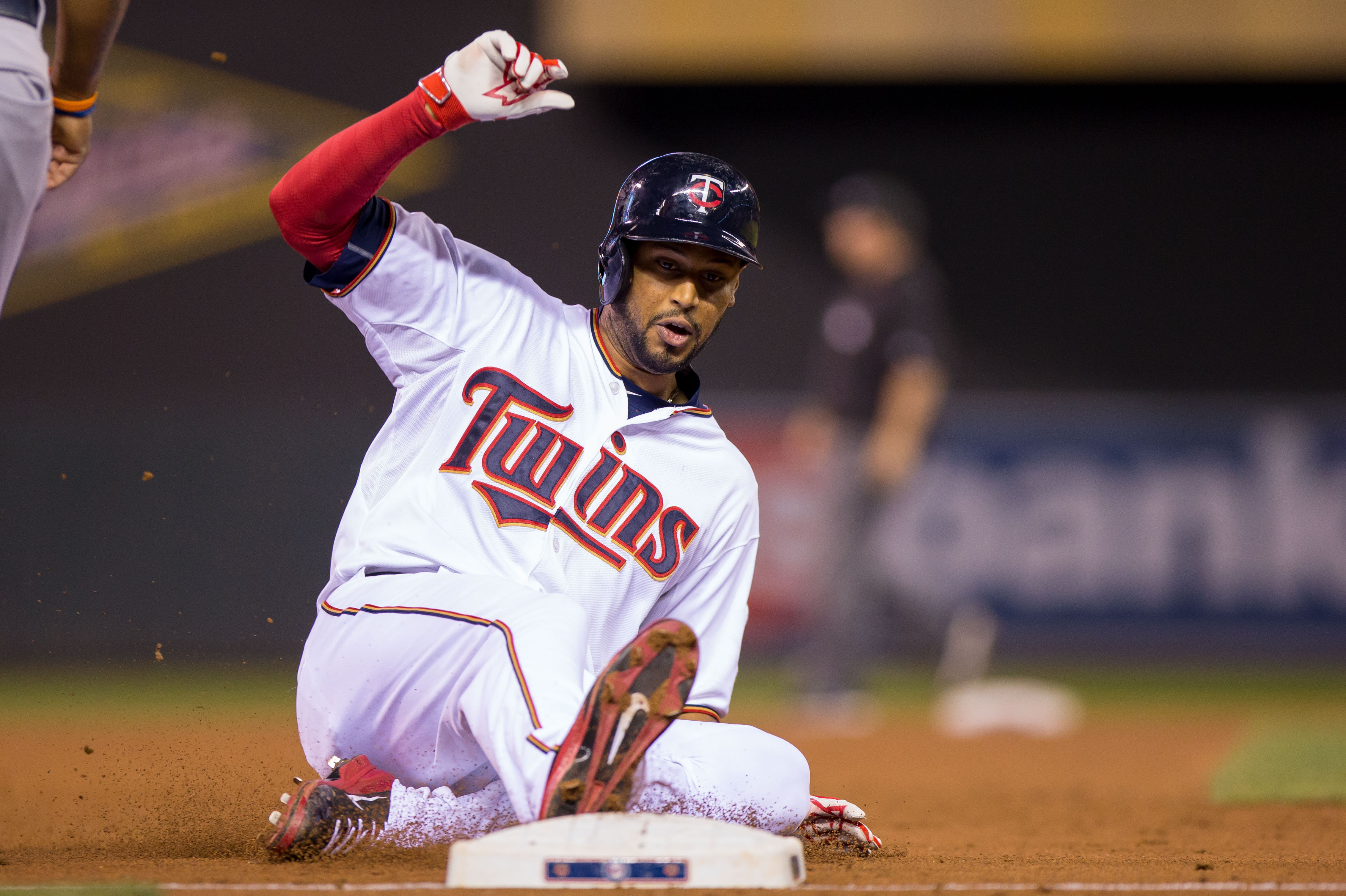On Nov. 11, the New York Yankees swapped backup catcher John Ryan Murphy for Minnesota Twins centerfielder Aaron Hicks. Following the departure of Chris Young on Dec. 2 (2 years, $13 million to Boston), Hicks was quickly established as New York’s fourth outfielder.
A portion of Yankee fans opposed these actions. Young fit in well as the team’s fourth outfielder last season, posting a 1.2 WAR in 140 games. He also owned a .972 OPS against left-handers, compared to Hicks’ .870. Simply put, Young did his job, which was to destroy lefties.
So, what makes Hicks an upgrade as a fourth outfielder?
Let’s factor in the trends of each player. Young is 32 and his offensive and defensive numbers have declined remarkably since his peak about five years ago in Arizona. Hicks is 26 and his production on the field and at the plate has risen. Notably, Hicks’ strikeout rate is down about eight percent from 2014 and his power numbers have hit new highs. Hicks knocked a career high 11 homers last year. Additionally, in 2014, 54% of Hicks’ hits came on liners and fliers, as opposed to grounders. Last season, that number rose to 63%. Hicks’ power trends show that he is quickly catching up to Young.
Without question, Hicks owns a brighter future than Young, barring a career-threatening injury or an unexpected downfall. Hicks is significantly better in the field than Young, who’s not as quick on the basepaths. Young totaled a -5.9 FRAA while Hicks posted a 6.2. On FanGraphs’ Speed Score, Hicks rated a 6.0 while Young rated a 4.4. Hicks proves faster on the field and the base paths, something highly valued in a bench option.
Even in Young’s strongest area, hitting against lefties, Hicks posts promising numbers:
Aaron Hicks in 2015 vs. Lefties: 101 AB, .307 AVG, 6 HR, 27 SO, .299 TAv
Chris Young in 2015 vs. Lefties: 153 AB, ..327, 7 HR, 28 SO, .339 TAv
Young carries a slight advantage against lefties. However, he is unusable against righties. Last year, he posted just a .182 batting average against right-handed pitching. The switch-hitting Hicks owned a .235 average against RHP, up from his .178 number the year before. The Yanks won’t receive much of a downfall against lefty pitchers when Hicks plays.
Finally, Hicks is the modern ‘Yankees outfielder,’ fitting into the mold of current Yankee types. Like Jacoby Ellsbury and Brett Gardner, Hicks owns a combination of elite speed and moderate power. Dave Cameron of FanGraphs created a table using the Steamer600 projections, which equalizes playing time for each player. The projections directly show correlation between Hicks, Ellsbury, and Gardner, displaying their similarities.
It becomes obvious when you compare Hicks’ projections with Ellsbury and Gardner that he is a more favorable option. Who would fans rather have in the future, a fourth outfielder who works as a platoon, or a third Ellsbury/Gardner type?
So, while some Yankee fans wish the team hadn’t let a lefty-destroying platoon player walk, others understand that the more well-rounded, more valuable Hicks will yield a higher return for New York in the future.
Lead photo: Brad Rempel/USA Today Sports

Hicks definitely has the best arm of anyone in the outfield and it is certainly possible that he will replace Gardner in left.
Heathcott is the best overall defensive OF in the system, imo.
Would love to see Heathcott stay healthy and replace Beltran at some point and platoon with judge and Hicks.